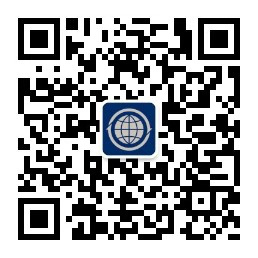1. MEE seeks submission of GHG Voluntary Emission Reduction Methodologies
The Ministry of Ecology and Environment (“MEE”) released the Notice on Public Solicitation of Suggestions for Methodologies of Greenhouse Gas Voluntary Emission Reduction Projects on 30 March 2023 (the “Notice”). The Notice encourages project owners, industry associations, scientific research institutions, colleges and universities and other enterprises and institutions to file new methodologies or revisions of the current methodologies that have been filed previously for MEE’s evaluation and selection before 30 April 2023.
Methodologies are the main basis for the registration of the greenhouse gas voluntary emission reduction projects and the verification of the China Certified Emission Reductions (the “CCERs”) generated by such projects. Project applicants need to prepare their project design documents (the “PDD”) on the basis of the methodologies registered with MEE.
The National Development and Reform Commission (“NDRC”) used to be the authority accepting the filling and the registration of voluntary emission reduction projects. However, the scheme for the issuance of CCERs has been suspended by NDRC since 2017 and all CCERs currently traded in the provincial carbon trading markets were registered before the suspension. Meanwhile, the key emitters (the “National Key Emitters”) are allowed to use CCERs purchased from the provincial trading markets to offset their emissions.
On one hand, most of the stock CCERs have already been used to offset the emissions of the emitters. On the other hand, as the market matures, some of the registered methodologies need to be updated to catch up with the various application scenarios. Therefore, with the solicitation of the methodologies, the registration of the voluntary emission reduction projects and the issuance of CCERs generated are expected to be resumed.
2. CBGEX’s CCER national unified registration and trading system is ready
China Beijing Green Exchange (“CBGEX”) disclosed on 4 February 2023 that the CCER national unified registration and trading system is now ready for further action.
MEE released the Administrative Measures for Carbon Emission Right Trading (Trial Implementation) (“Trial Measures”) back on 5 January 2021 and the first national carbon emission trading scheme (the “ETS”) was launched on 16 July 2021. The national ETS now uses the provincial carbon trading exchanges in Hubei Province (for registration and settlement) and Shanghai (for trading).
The trading product under the national ETS at this stage is the China Emission Allowances (the “CEAs”) allocated to the National Key Emitters, whilst the provincial carbon trading markets (including Beijing, Tianjin, Shanghai, Guangzhou, Shenzhen, Hubei, Chongqing, Sichuan and Fujian) allow participants to trade other products, e.g., spot trading of CCERs, trading of futures and financial derivatives with respect to local CEAs and CCERs.
The registration system developed will serve the issuance of CCERs and the trading system developed is prepared for the trading of CCERs at the national level. Therefore, once the registration system and the trading system are ready to be put into use, CCERs are expected to be introduced to the national ETS, drawing reference from the provincial carbon trading markets, which will bring the national ETS one step closer to the consolidation of the provincial carbon trading markets.
3. MEE issued the technical guidelines on the reporting and auditing of GHG emissions from electric power companies and the technical guidelines on the verification of GHG emissions from electric power companies
The newly revised Technical Guidelines for Reporting and Auditing of Greenhouse Gas Emissions (Power Companies) (hereinafter referred to as the “Reporting and Auditing Guidelines”) and the Technical Guidelines for Verification of Greenhouse Gas Emissions (Power Companies) (hereinafter referred to as the “Verification Guidelines”) were issued by MEE on 19 December 2022 and came into effect on 1 January 2023.
The Reporting and Auditing Guidelines will be a technical document that guides electric power companies in pre-reporting and auditing carbon emissions and will act as a main basis of the allocation of CEAs for the third compliance stage (2023-2024) of the national ETS. In addition, MEE plans to formulate and issue regulations concerning the administration of the green gas emission data quality to support the application of the Reporting and Auditing Guidelines.
The Verification Guidelines stipulates the principles, methods and key points of the verification of the annual greenhouse gas emission reports. The provisions of the Verification Guidelines correspond to the provisions of the Reporting and Auditing Guidelines. Generally, only items stipulated in the Reporting and Auditing Guidelines are subject to verification.
The National Key Emitters are required to prepare and file with the local provincial-level MEE a report on their greenhouse gas emission for the previous year before 31 March each year to report their actual emission volume in accordance with the Trial Measures. Such annual greenhouse gas emission reports shall be compiled in line with the Reporting and Auditing Guidelines. The provincial-level MEE shall organize and carry out or entrust technical service agencies to carry out the verification of the annual greenhouse gas emission reports submitted in line with the Verification Guidelines before 30 June each year and file the results to MEE. The verification results shall be used as the basis for the clearance of CEAs.
4. Six more securities companies have been admitted participating in the carbon trading by CSRC
After the CITIC Securities and Guotai Junan Securities have been approved to participate in the carbon trading, six more securities companies have been approved to access the carbon market on 31 January 2023 by China Securities Regulatory Commission (“CSRC”), including Hwabao Securities, Huatai Securities, Orient Securities, Shenwan Hongyuan Securities, CICC and China Securities.
The existing provincial carbon trading markets allow (i) local key greenhouse gas emitters identified by the relevant provincial-level MEEs, (ii) other qualified entities/ institutions, and (iii) qualified individuals to participate in the trading of local CEAs. The Trial Measures also admit three types of entity to participate in the ETS in theory, but in practice, for now, the national ETS participants are limited to the National Key Emitters identified by each provincial-level MEEs and approved by MEE. The National Key Emitters can only participate in the national ETS and may no longer trade on the provincial carbon trading markets. The standards for other institutions and individuals to participate the national ETS have not yet been clarified.
The forementioned securities companies have been allowed to enter the provincial carbon trading markets. By accessing the provincial carbon trading markets, securities companies may open accounts and conduct carbon trading in the provincial carbon trading exchanges, including trading the local CEAs and CCERs directly, which indicates the intension and trend of deepening the carbon trading markets and developing a financing market for carbon. More participants including securities companies, financial institutions and other non-end user investors are expected to be introduced to both the provincial carbon trading markets and the national ETS.









